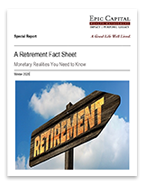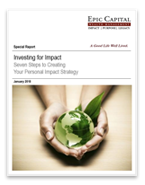The Bond Market Listens When the Fed Talks Inflation
Sep 30, 2020
Most recently, you may have read that Federal Reserve Chair Jerome Powell announced a change in how the Fed views inflation. In the past, the Fed said it would consider adjusting bond market short-term rates when inflation approached 2 percent. But in light of 2020’s many challenges, the Fed’s new policy may allow inflation to run above 2 percent for a period of time before any shift in monetary policy is considered.1
For many, bonds are a critical component of their overall investment strategy. So any change in Fed policy regarding inflation may influence a portfolio. That’s why it’s so important to understand that the market value of a bond will fluctuate with changes in interest rates. In other words, when interest rates rise, the value of existing bonds will typically fall.2
There’s no doubt this will be a subtle change for many. But for bond investors, the policy shift may indicate that the Fed has given itself more flexibility in the future.
But, what does that mean for the outlook for the bond market as a whole? It’s unclear. However, lower levels of unemployment in recent years have not led to higher inflation. This new phenomenon runs counter to the Phillips curve, a concept which states that inflation and unemployment have a stable and inverse relationship. With this data in mind and the changes announced by Chairman Powell, it could be argued that the Fed believes the relationship between unemployment and inflation has changed.3
In earlier videos, financial advisor Ed Doughty mentions the relationship between the Fed and the economy, as well as elaborates on the age-old expression “Don’t Fight the Fed”.
Keep in mind that if an investor sells a bond before maturity, it may be worth more or less than the initial purchase price. By holding a bond to maturity, an investor will receive the interest payments due plus your original principal, barring default by the issuer. Investments seeking to achieve higher yields also involve a higher degree of risk.
Tags: Current Events, Personal Finance
More Insights
You’re beginning to accumulate substantial wealth, but you worry about protecting it from future potential creditors. Whether your concern is for your personal assets or your business, various tools exist to keep your property safe from tax collectors, accident victims, health-care providers, credit card issuers, business creditors, and creditors of others. To insulate your property … Continue reading “Estate Planning – Protecting Your Assets”
You know how important it is to plan for your retirement, but where do you begin? One of your first steps should be to estimate how much income you’ll need to fund your retirement. That’s not as easy as it sounds, because retirement planning is not an exact science. Your specific needs depend on your … Continue reading “Estimating Your Retirement Income Needs”
As June begins, markets continue to navigate a complex landscape shaped by trade policy shifts, an uncertain economic and earnings outlook, and bond market headwinds. Several key developments in recent weeks may have implications for markets:
April showers came a month early as stocks fell in March. Tariffs were the primary cause of the market jitters, although that uncertainty became too much for markets to shrug off once economic data started to weaken.
A successful investor maximizes gain and minimizes loss. Though there can be no guarantee that any investment strategy will be successful and all investing involves risk, including the possible loss of principal, here are six basic principles that may help you invest more successfully.
Services
Epic Capital provides the following comprehensive financial planning and investment management services: Learn More >


 Top of Page
Top of Page











